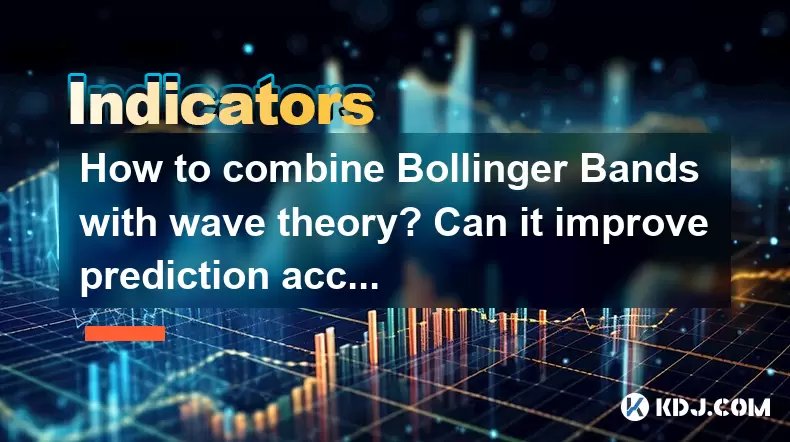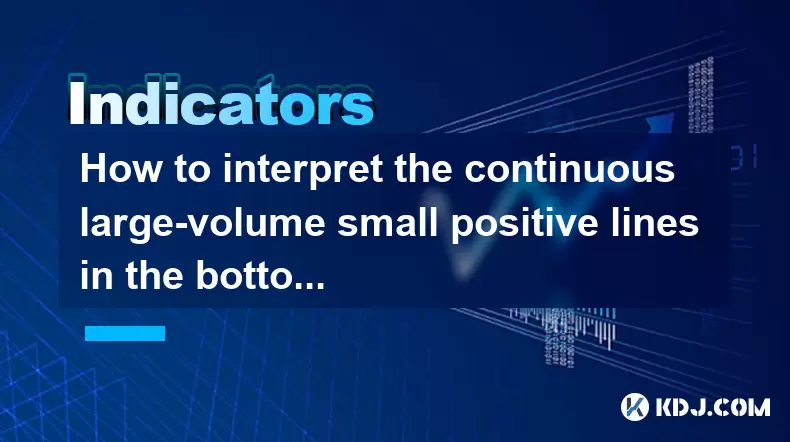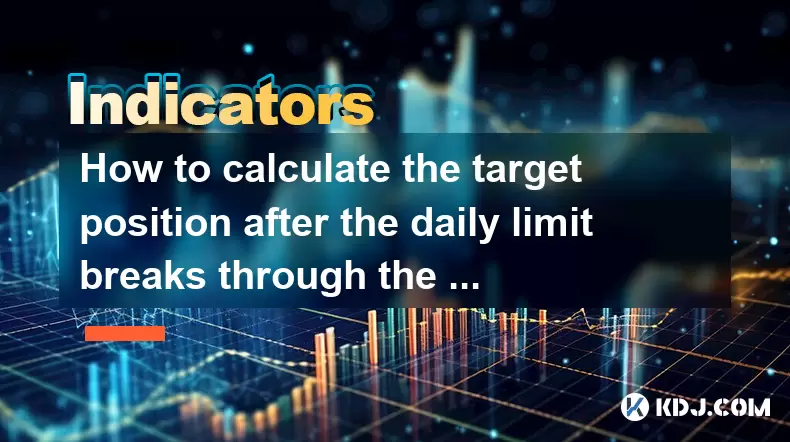-
 Bitcoin
Bitcoin $101,898.5005
-0.75% -
 Ethereum
Ethereum $2,258.1125
-1.07% -
 Tether USDt
Tether USDt $1.0004
0.01% -
 XRP
XRP $2.0178
-2.93% -
 BNB
BNB $624.0243
-1.53% -
 Solana
Solana $134.3298
-0.90% -
 USDC
USDC $0.9999
0.01% -
 TRON
TRON $0.2675
-2.05% -
 Dogecoin
Dogecoin $0.1538
-1.96% -
 Cardano
Cardano $0.5482
-1.11% -
 Hyperliquid
Hyperliquid $35.5636
5.45% -
 Bitcoin Cash
Bitcoin Cash $453.4902
-1.66% -
 Sui
Sui $2.5134
-2.97% -
 UNUS SED LEO
UNUS SED LEO $9.1292
1.77% -
 Chainlink
Chainlink $11.8457
-1.60% -
 Stellar
Stellar $0.2312
-2.73% -
 Avalanche
Avalanche $16.9721
0.29% -
 Toncoin
Toncoin $2.7549
-3.82% -
 Shiba Inu
Shiba Inu $0.0...01081
-1.10% -
 Litecoin
Litecoin $80.8250
-0.71% -
 Hedera
Hedera $0.1374
0.21% -
 Monero
Monero $305.4827
-2.36% -
 Ethena USDe
Ethena USDe $1.0006
0.00% -
 Dai
Dai $1.0000
-0.01% -
 Polkadot
Polkadot $3.2085
-3.12% -
 Bitget Token
Bitget Token $4.0845
-3.13% -
 Uniswap
Uniswap $6.3353
-1.63% -
 Pi
Pi $0.5085
-0.70% -
 Pepe
Pepe $0.0...08913
-3.82% -
 Aave
Aave $232.7090
-0.58%
How to combine Bollinger Bands with wave theory? Can it improve prediction accuracy?
Bollinger Bands and Elliott Wave Theory can enhance crypto trading accuracy by combining volatility insights with trend pattern analysis.
May 24, 2025 at 12:49 am

Introduction to Bollinger Bands and Wave Theory
Bollinger Bands are a popular technical analysis tool used in the cryptocurrency market to measure volatility and identify potential overbought or oversold conditions. Developed by John Bollinger, these bands consist of a middle band being a simple moving average (SMA) and two outer bands that are standard deviations away from the SMA. On the other hand, wave theory, most notably Elliott Wave Theory, is used to predict market trends by identifying patterns in price movements. Combining these two methodologies can potentially enhance the accuracy of market predictions in the volatile crypto environment.
Understanding Bollinger Bands
Bollinger Bands are composed of three lines: the middle band, the upper band, and the lower band. The middle band is typically a 20-day simple moving average (SMA). The upper and lower bands are calculated by adding and subtracting two standard deviations from the middle band, respectively. These bands expand and contract based on market volatility, providing traders with insights into potential price breakouts or reversals.
- When the price touches the upper band, it may indicate an overbought condition, suggesting a potential price decrease.
- When the price touches the lower band, it could signal an oversold condition, hinting at a possible price increase.
Basics of Elliott Wave Theory
Elliott Wave Theory, developed by Ralph Nelson Elliott, suggests that market prices move in repetitive cycles influenced by investor psychology. The theory identifies five waves in the direction of the main trend (impulse waves) followed by three corrective waves. These waves can be broken down into smaller waves, creating a fractal pattern that can be applied to different time frames.
- Impulse waves (1, 3, 5) are in the direction of the main trend and are usually stronger.
- Corrective waves (2, 4, A, B, C) move against the main trend and are typically weaker.
Understanding these patterns can help traders anticipate future price movements.
Combining Bollinger Bands with Wave Theory
To combine Bollinger Bands with wave theory, traders should focus on how price movements within the Bollinger Bands align with the identified wave patterns. Here’s how to approach this integration:
Identify the current wave pattern: Begin by analyzing the current price action to determine where it stands within the Elliott Wave sequence. Is it part of an impulse wave or a corrective wave?
Overlay Bollinger Bands: Apply Bollinger Bands to the chart to see how the price interacts with the upper and lower bands during these waves.
Analyze price behavior at band extremes: Pay close attention to how the price behaves when it reaches the upper or lower Bollinger Bands. For instance, if the price touches the upper band during an impulse wave, it might suggest the wave is nearing completion.
Use band width for wave confirmation: The width of the Bollinger Bands can provide additional insight. Narrow bands often precede significant price movements, which can coincide with the start of a new wave.
Practical Application in Crypto Trading
Let’s explore how to practically apply this combined approach in the context of cryptocurrency trading:
Select a crypto asset: Choose a cryptocurrency with sufficient trading volume and liquidity, such as Bitcoin or Ethereum, to ensure the accuracy of your analysis.
Set up your charting software: Use a reliable charting platform that supports both Bollinger Bands and wave analysis. Platforms like TradingView or MetaTrader are popular choices.
Apply Bollinger Bands: Configure the Bollinger Bands with a 20-period SMA and a 2-standard deviation setting for the upper and lower bands.
Identify wave patterns: Begin by marking the waves on your chart. Use historical price data to identify the five impulse waves and three corrective waves.
Monitor price action at band extremes: Watch how the price reacts when it reaches the upper and lower bands. If the price consistently reverses at these points, it could reinforce your wave analysis.
Confirm with band width: Use the width of the Bollinger Bands to validate your wave predictions. A narrowing of the bands may signal an upcoming significant move, potentially indicating the start of a new wave.
Make trading decisions: Based on your combined analysis, decide whether to enter a long or short position. For example, if the price is at the lower band during an impulse wave, it might be a good time to buy.
Case Study: Applying the Method to Bitcoin
To illustrate this method, consider a recent price movement in Bitcoin. Suppose Bitcoin is in the third wave of an upward trend. You apply Bollinger Bands to the chart and notice that the price touches the upper band during this wave.
Price at upper band during wave 3: This could indicate that the third wave is nearing its end, as the price is showing signs of being overbought.
Subsequent price action: After touching the upper band, the price begins to pull back, confirming the end of wave 3. The bands start to narrow, suggesting lower volatility and potentially the start of wave 4.
Wave 4 and lower band: As wave 4 progresses, the price approaches the lower Bollinger Band. This could signal that wave 4 is nearing completion, and wave 5 might soon begin.
Wave 5 and trading decision: If the price bounces off the lower band and the bands start to widen again, it could be a good opportunity to enter a long position, anticipating the start of wave 5.
Potential Improvement in Prediction Accuracy
By combining Bollinger Bands with wave theory, traders can gain a more comprehensive view of market dynamics. Bollinger Bands provide a quantitative measure of volatility and potential overbought/oversold conditions, while wave theory offers a qualitative analysis of market trends and cycles. When used together, these tools can help traders make more informed decisions by confirming or challenging their predictions.
For instance, if wave analysis suggests the start of a new impulse wave, but the price is at the upper Bollinger Band, traders might be more cautious about entering a long position. Conversely, if the price is at the lower band and wave analysis indicates the start of a new wave, it could provide stronger confidence in a bullish prediction.
Frequently Asked Questions
Q: Can Bollinger Bands be adjusted for different time frames in wave analysis?
A: Yes, Bollinger Bands can be adjusted for different time frames. For shorter-term wave analysis, you might use a shorter period for the SMA (e.g., 10 periods) and adjust the standard deviation accordingly. For longer-term analysis, you might extend the SMA period (e.g., 50 periods) to align with longer wave cycles.
Q: How do I handle false signals when combining these methods?
A: False signals can be mitigated by using additional confirmation tools, such as volume analysis or other technical indicators like the Relative Strength Index (RSI). If both Bollinger Bands and wave theory suggest a move, but volume or RSI does not confirm, it might be wise to wait for further confirmation.
Q: Is this method suitable for all cryptocurrencies?
A: While this method can be applied to any cryptocurrency, it is most effective with assets that have high liquidity and trading volume. Less liquid cryptocurrencies may exhibit more erratic price movements, making it harder to accurately identify wave patterns and interpret Bollinger Bands.
Q: Can beginners use this combined approach effectively?
A: Beginners can use this approach, but it requires a good understanding of both Bollinger Bands and wave theory. It’s recommended to start with simpler analysis methods and gradually incorporate more complex techniques as you gain experience.
Disclaimer:info@kdj.com
The information provided is not trading advice. kdj.com does not assume any responsibility for any investments made based on the information provided in this article. Cryptocurrencies are highly volatile and it is highly recommended that you invest with caution after thorough research!
If you believe that the content used on this website infringes your copyright, please contact us immediately (info@kdj.com) and we will delete it promptly.
- Bitcoin Price Wobbles: Crash Watch and Key Support Levels
- 2025-06-23 16:25:12
- Navigating the Crypto Seas: Charting a Course Through Bull Runs and Bear Markets
- 2025-06-23 16:25:12
- BNB Price Check: Stablecoin Surge vs. Prediction Rollercoaster
- 2025-06-23 14:25:12
- Metaplanet's Bitcoin Bonanza: Holdings Skyrocket Amidst Market Swings
- 2025-06-23 14:25:12
- Global Meltdown, Investors, and Safe Havens: Navigating the Storm
- 2025-06-23 14:30:12
- NFT Sales Snapshot: Guild of Heroes, Polygon, and the Market's Shifting Sands
- 2025-06-23 15:25:12
Related knowledge

Is the high opening and low closing and huge volume the next day a trap for more?
Jun 23,2025 at 05:07pm
Understanding High Opening and Low Closing with Huge VolumeWhen traders observe a high opening followed by a low closing and massive volume the next day, it often raises concerns about whether this is a trap set by larger players in the market. This pattern typically indicates strong volatility within a short period, which can confuse retail investors. ...

How to interpret the MACD's second golden cross on the water but insufficient volume?
Jun 23,2025 at 05:01pm
Understanding the MACD Indicator and Its SignificanceThe Moving Average Convergence Divergence (MACD) is a widely used technical analysis tool in cryptocurrency trading. It helps traders identify potential buy or sell signals by showing the relationship between two moving averages of an asset’s price. The MACD line, signal line, and histogram are the th...

How much volume is required for the W-bottom to break through the neckline of the time-sharing chart?
Jun 23,2025 at 04:21pm
Understanding the W-Bottom Pattern in Cryptocurrency TradingThe W-bottom pattern is a popular technical analysis formation used by traders to identify potential bullish reversals. It typically appears at the end of a downtrend and resembles the letter 'W' on price charts. In the context of cryptocurrency trading, where volatility is high and trends shif...

How to interpret the continuous large-volume small positive lines in the bottom area?
Jun 23,2025 at 04:43pm
Understanding the Basics of 'Large-Volume Small Positive Lines'In technical analysis, especially within the cryptocurrency market, the pattern known as 'large-volume small positive lines' refers to a scenario where the price increases slightly (small positive candlestick) but is accompanied by unusually high trading volume. This phenomenon typically occ...

How to read the sideways consolidation after the bottom volume and long positive line?
Jun 23,2025 at 02:28pm
Understanding the Sideways ConsolidationWhen analyzing cryptocurrency charts, sidewards consolidation refers to a phase where prices move within a narrow range without a clear upward or downward trend. This pattern often appears after significant price movements, such as a sharp increase followed by a period of equilibrium between buyers and sellers. In...

How to calculate the target position after the daily limit breaks through the previous high?
Jun 23,2025 at 02:57pm
Understanding the Daily Limit BreakthroughIn cryptocurrency trading, a daily limit typically refers to the maximum price movement allowed within a single trading day on certain exchanges. When this limit is breached, especially when it surpasses the previous high, traders often seek to calculate the target position or expected price movement following s...

Is the high opening and low closing and huge volume the next day a trap for more?
Jun 23,2025 at 05:07pm
Understanding High Opening and Low Closing with Huge VolumeWhen traders observe a high opening followed by a low closing and massive volume the next day, it often raises concerns about whether this is a trap set by larger players in the market. This pattern typically indicates strong volatility within a short period, which can confuse retail investors. ...

How to interpret the MACD's second golden cross on the water but insufficient volume?
Jun 23,2025 at 05:01pm
Understanding the MACD Indicator and Its SignificanceThe Moving Average Convergence Divergence (MACD) is a widely used technical analysis tool in cryptocurrency trading. It helps traders identify potential buy or sell signals by showing the relationship between two moving averages of an asset’s price. The MACD line, signal line, and histogram are the th...

How much volume is required for the W-bottom to break through the neckline of the time-sharing chart?
Jun 23,2025 at 04:21pm
Understanding the W-Bottom Pattern in Cryptocurrency TradingThe W-bottom pattern is a popular technical analysis formation used by traders to identify potential bullish reversals. It typically appears at the end of a downtrend and resembles the letter 'W' on price charts. In the context of cryptocurrency trading, where volatility is high and trends shif...

How to interpret the continuous large-volume small positive lines in the bottom area?
Jun 23,2025 at 04:43pm
Understanding the Basics of 'Large-Volume Small Positive Lines'In technical analysis, especially within the cryptocurrency market, the pattern known as 'large-volume small positive lines' refers to a scenario where the price increases slightly (small positive candlestick) but is accompanied by unusually high trading volume. This phenomenon typically occ...

How to read the sideways consolidation after the bottom volume and long positive line?
Jun 23,2025 at 02:28pm
Understanding the Sideways ConsolidationWhen analyzing cryptocurrency charts, sidewards consolidation refers to a phase where prices move within a narrow range without a clear upward or downward trend. This pattern often appears after significant price movements, such as a sharp increase followed by a period of equilibrium between buyers and sellers. In...

How to calculate the target position after the daily limit breaks through the previous high?
Jun 23,2025 at 02:57pm
Understanding the Daily Limit BreakthroughIn cryptocurrency trading, a daily limit typically refers to the maximum price movement allowed within a single trading day on certain exchanges. When this limit is breached, especially when it surpasses the previous high, traders often seek to calculate the target position or expected price movement following s...
See all articles
























































































